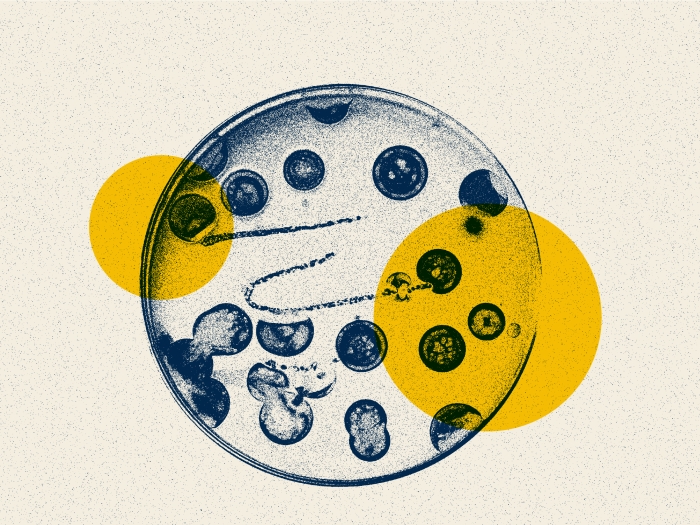The collection of close to 2,000 samples provides an unbiased view of canine genetics
11:56 AM
Author |

Listen to the episode instead on Health Lab's podcast: What DNA Can Tell Us About Dog Evolution
An international consortium of scientists, led by Jeff Kidd, Ph.D., of University of Michigan, Jennifer R. S. Meadows of Uppsala University in Sweden, and Elaine A. Ostrander, Ph.D. of the NIH National Human Genome Research Institute, is using an unprecedentedly large database of canine DNA to take an unbiased look at how our furry friends evolved into the various breeds we know and love.
A paper, published in the journal Genome Biology, outlines what the Dog10K project discovered after sequencing the genomes of close to 2,000 samples from 321 different breed dogs, wild dogs, coyotes, and wolves, and comparing them to one reference sample—that of a German Shepherd named Mischka.
Analyzing more than 48 million pieces of genetic information, they discovered that each breed dog had around 3 million single nucleotide polymorphism differences.
These SNPs or “snips” are what account for most of the genetic variation among people and dogs alike.
They also found 26,000 deleted sequences that were present in the German Shepherd but not in the comparison breed and 14,000 that were in the compared breed but missing from Mischka’s DNA.
“We did an analysis to see how similar the dogs were to each other, and it ended up that we could divide them into around 25 major groups that pretty much match up with what people would have expected based on breed origin, the dogs’ type, size and coloration,” said Kidd, a professor of Human Genetics and Computational Medicine and Bioinformatics at the U-M Medical School.
Most of the varying genes, he added, had to do with morphology, confirming that the breed differences were driven by how the dogs look.
Relative to dogs, wolves had around 14% more variation. And wild village dogs—dogs that live amongst people in villages or cities but aren’t kept as pets—exhibited more genetic variation than breed dogs.
The data set, which was processed using the Great Lakes high-performing computing cluster at U-M, also revealed an unusual amount of retrogenes, a new gene that forms when RNA gets turned back into DNA and inserted back into the genome in a different spot.
The study found 926 retrogenes, the most famous of which, says Kidd, is a retrogene called FGF4, which results in the short leg phenotype seen in dachshunds and corgis.
“Dogs tend to have an increased amount of retrogenes which have resulted in mutations that were selected for, that perhaps people found cute and bred more of,” said Kidd.
His lab is attempting to figure out why retrogenes and insertions happen so frequently in dogs.
One of the benefits of the Dog10K consortium is its size, which will enable researchers at U-M and elsewhere to examine the genetic underpinnings of other canine characteristics and even common diseases in dogs, such as cancer.
Paper cited: “Genome sequencing of 2000 canids by the Dog10K consortium advances the understanding of demography, genome function and architecture,” Genome Biol 24. DOI: 10.1186/s13059-023-03023-7

Explore a variety of health care news & stories by visiting the Health Lab home page for more articles.

Department of Communication at Michigan Medicine
Want top health & research news weekly? Sign up for Health Lab’s newsletters today!





